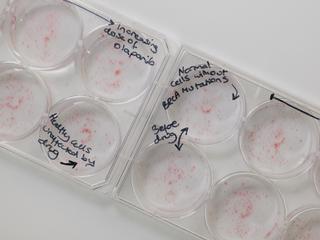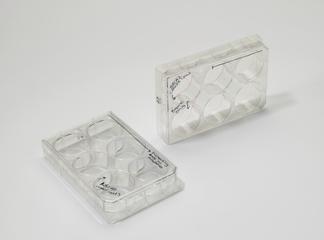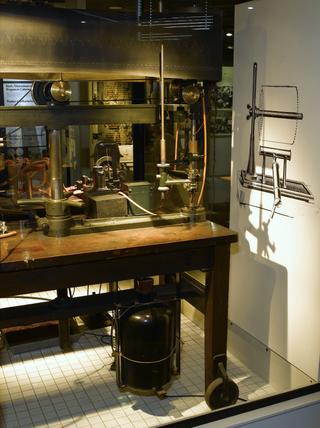
Kymograph, London, England, 1925-1935




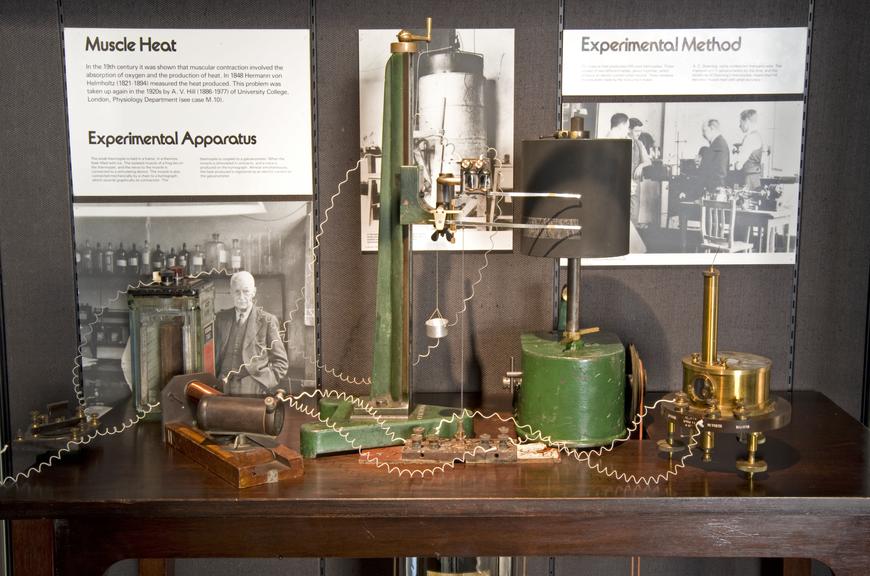
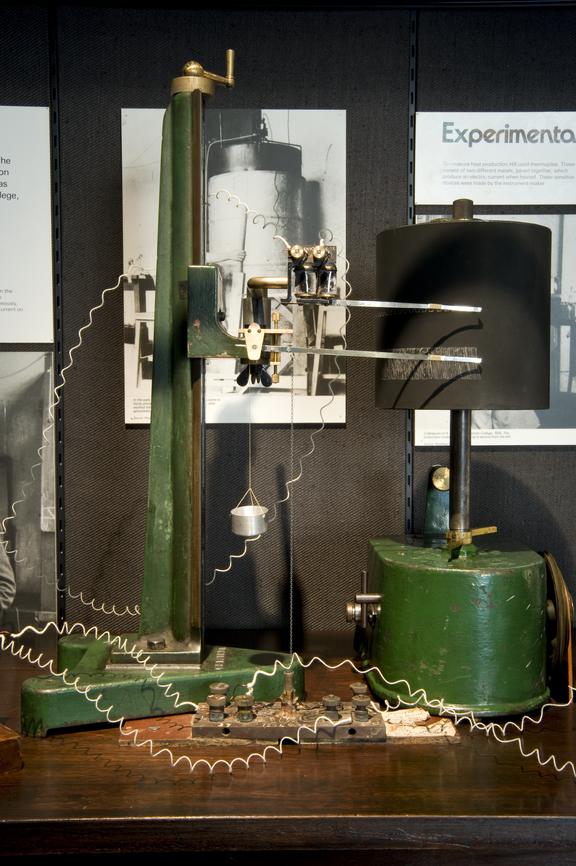
Kymograph, on mahogany table stand, by C.F. Palmer, London, 1925-1935
The kymograph is a classic tool of laboratory research invented by the German physiologist Carl Ludwig (1816-1895) in 1847. It was first used to measure blood pressure during physiological experiments. A cannula connected to a U-shaped tube filled with mercury was inserted into the artery of an animal. On top of the mercury was a float attached to a pen. As the blood pulsated, the pen recorded the movement on smoked paper wrapped around the metal drum. The kymograph, shown here, is adapted to record muscle contractions.
An isolated muscle is placed on coils of wire and connected to an electrical stimulus, controlled by a switch. The muscle is also attached to the kymograph to record when the muscle contracts. When the muscle is stimulated, heat is produced and transferred to the thermocouple (cut away to show the two coils of metal which, when heated, produce an electric current). The thermocouple is attached to a galvanometer to record the electric current produced when the thermocouple is heated.
Details
- Category:
- Laboratory Medicine
- Object Number:
- 1981-604
- Materials:
- fittings, iron and frame, mahogany
- Measurements:
-
overall: 69 kg
- type:
- kymograph
- credit:
- St. Bartholomew's Hospital Medical College
